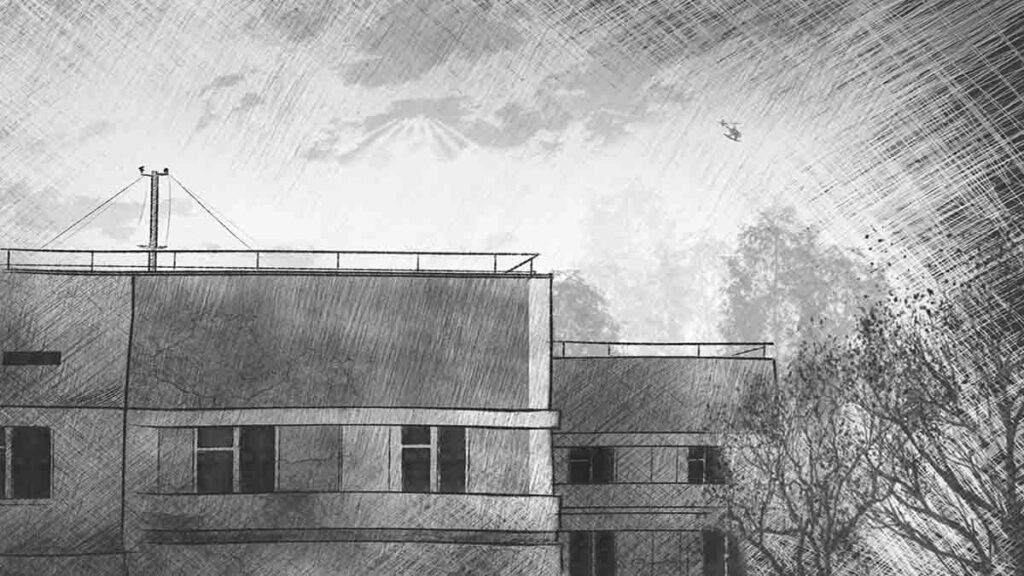
From the materials of the Kiev region of the newspaper “Tribune of energetic”, the organ of the party committee, the united trade union committee, the Komsomol committee of the Construction Department of the Chernobyl Nuclear Power Plant named after V.I. Lenin
September 26, 1986
On the eve of important matters
They are approaching the very last stage of work to complete the construction of the sarcophagus of the fourth power unit. The work on the construction of concrete walls, including the one that closes the block from the destruction side, has been completed. Now the next step is an extremely difficult task: to shut down the reactor from above with unique steel metal structures that were manufactured in Dnepropetrovsk on a government assignment.
After that, the sarcophagus will be concreted from above. At the final stage, all construction teams work around the clock, seven days a week. To date, the reactor of the fourth power unit is in a balanced state. It is quite stable, as evidenced not only by the data of external dosimetric monitoring, but by specially installed monitoring devices inside the power unit itself.
This allows us to get comprehensive information about the behavior of the reactor, the temperature below it, the release of aerosols. In addition to understanding the degree of safety of the reactor itself, it is important to know the risks involved in the preparation and commissioning of the first and second Chernobyl power units. The energy launch of the first power unit is the task of the coming days. All preparatory work for its successful operation is completed.
Until recently, the storage of nuclear fuel was listed among facilities whose incompleteness served as an obstacle to the further stable commissioning of the shutdown of the first and second power units. But on September 22, nuclear fuel cassettes began to arrive at the prepared waste storage facility – an important milestone has been overcome. Naturally, the safety of staff on the blocks newly introduced into the working rhythm remained in the foreground.
A huge range of work was carried out to decontaminate the industrial site and the interior of the first and second power units for this. It was decided to install additional air conditioners for the safety of workers – the indoor air will remain clean during their continuous operation.
One of the most important links in the complex of liquidation measures is the conduct of decontamination operations in relation to the soil. It is necessary to clean the soil throughout the Chernobyl territory, build filtering and protective facilities, which can guarantee the absence of radionuclides in the soil and groundwater in the future. Today filtering dams and dead dams with a bulk of special material are already under construction.
Of course, it will be necessary to constantly monitor their reliability in the future. But most significantly, their presence is already of invaluable importance for the safety of people. We are all on the eve of the most important events, which were prepared by the many months and heroic work of thousands of Soviet workers. A few days separate us from the moment when the current of the Chernobyl nuclear power plant enters the country’s energy system again. All high-voltage lines and substations are ready to receive this long-awaited energy”.
Chernobyl NPP: people, events, facts
“We all know how sometimes production needs truly competent solutions that meet engineering requirements, and what sometimes a mistake in the project costs builders. Now, in the current conditions, any mistake is regarded extremely strictly. Especially if it is associated with the programming of the production process and technical calculations.
And although we had to face many types of work for the first time, we will give credit to the think tank of construction. The price of Chernobyl workdays is great. Having lost track of her working time, the Atomic Energy System project design team, led by V.P. Lysenko, handed over, ahead of schedule, a project for loading and unloading at the newly built first stage of the Vilcha station’s design department.
The designers’ memories of sleepless nights are still fresh when an urgent government order for the construction of air ducts, preparing for the commissioning of the first and second Chernobyl NPP units, was carried out. For the first time in practice, the hydraulic fracturing team developed PPR sanitation facilities that are being successfully built in nearby villages.
There is still a lot of current, so-called “fire” work – the installation of railway wagons for temporary housing, the installation of electric-water-heat supply in shift houses, and much more. Everyday work of hard graft — this is how one can describe work at the Chernobyl sites today”.